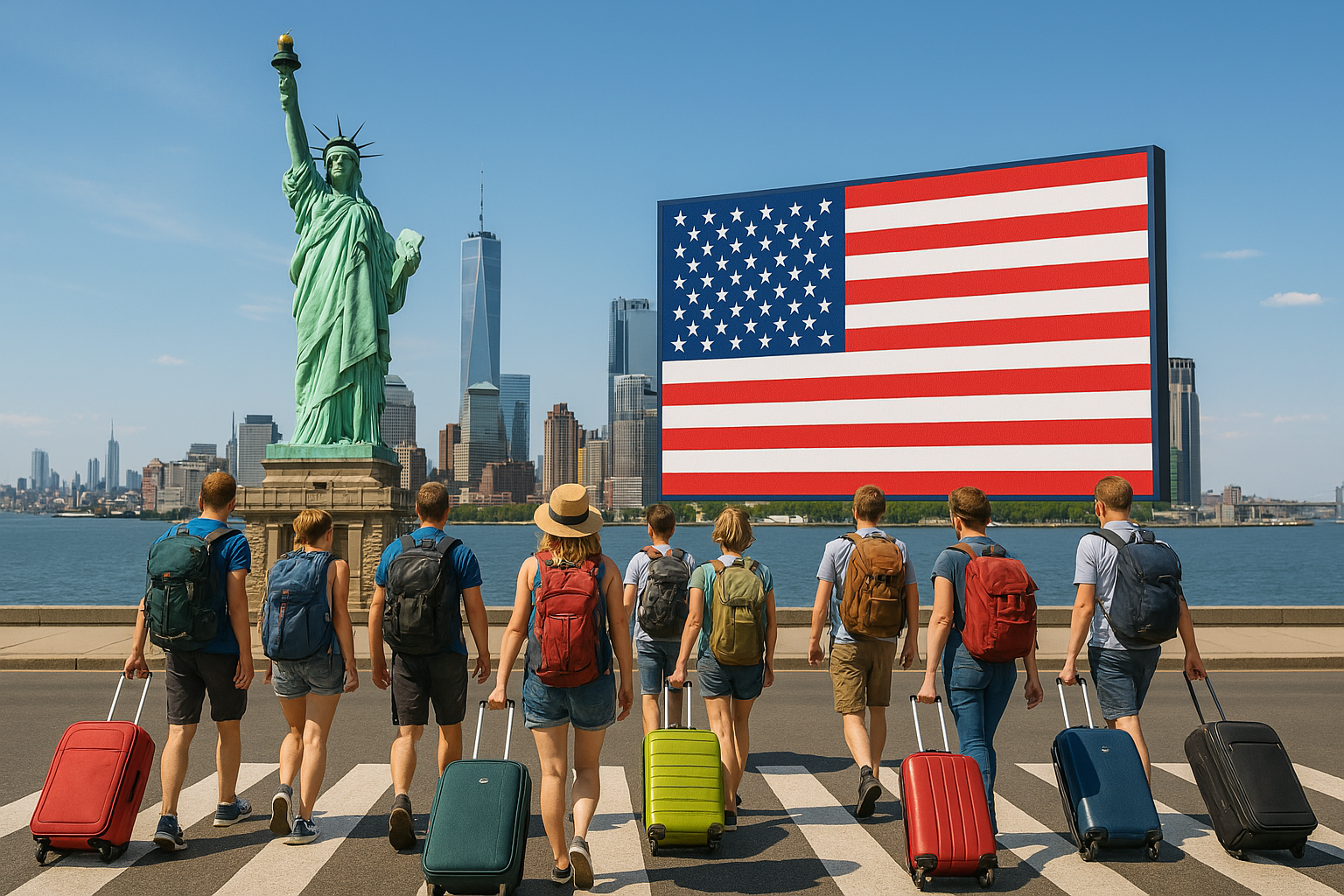
The travel industry has always been a reflection of global moods and policies, and the latest data paints a sobering picture for U.S. tourism — European visitors are steering away from the United States in significant numbers since Donald Trump’s return to office in January 2025.
A detailed analysis from the International Trade Administration and the U.S. Department of Commerce, illustrated by the Financial Times, highlights this sharp decline. The year-on-year percentage change in visitors from eight key European countries — Austria, Denmark, Germany, Iceland, Norway, Spain, Sweden, and the UK — reveals a striking downward trend beginning in early 2025.
Austria: After peaking with more than +20% growth in 2024, Austrian tourism to the U.S. sharply declined, plunging to nearly -30% early in 2025.
Denmark: Danish travelers held steady throughout 2024 but fell drastically in 2025, with visitor numbers down by around -30%.
Germany: The German market, a significant contributor to U.S. tourism, also saw strong growth in 2024 but has since plummeted to almost -30% year-on-year.
Iceland: Icelandic visitor numbers, once fluctuating but steady, have also nosedived to nearly -30% early this year.
Norway: Norwegian tourists showed signs of recovery in 2024, but this too reversed dramatically in 2025, falling by nearly -30%.
Spain: Spain mirrored the same trend, showing healthy fluctuations in 2024 before experiencing a dramatic drop to about -30%.
Sweden: Swedish tourists have also pulled back, with the 2025 data reflecting a similar ~-30% decline.
United Kingdom: The UK, traditionally a steady source of visitors, saw a more stable 2024 — but early 2025 has brought a steep fall approaching -30%.
The uniformity across these diverse countries suggests a strong underlying cause, likely tied to political and social perceptions of the U.S. under the Trump administration. Policies on immigration, global diplomacy, and visa rules may all be discouraging travel, not to mention the broader international perception of the United States in the current political climate.
Historically, the U.S. has always been a major destination for European tourists, drawn to its diverse cities, landscapes, and culture. But now, the once-robust flow of visitors appears to have slowed to a trickle.
The implications of this downturn are serious. The American tourism and hospitality industries — including airlines, hotels, and entertainment venues — rely heavily on European visitors. A sustained slump could ripple through local economies, particularly in cities like New York, Los Angeles, Miami, and Las Vegas, which have long been magnets for European travelers.
Disclaimer:
This article is based on data visualizations published by the Financial Times and sourced from the International Trade Administration and the U.S. Department of Commerce. The intent is to present statistical trends for informational purposes only and not to make political judgments or predictions. Economic and travel trends are often influenced by a wide range of factors including but not limited to government policies, global events, and consumer sentiment, which should all be considered when drawing conclusions.




